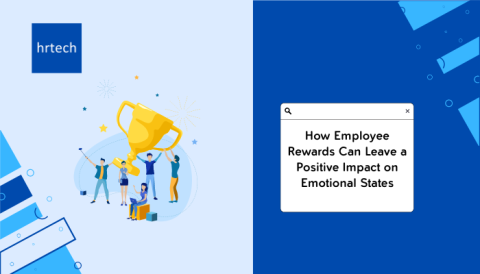For most businesses, employee benefits are just another component of an employee’s overall compensation package. Typically, benefits are structured in similar ways from one business to the next. This usually includes basic healthcare options, retirement plans, and potentially, additional provisions like life or disability insurance.
However, while offering any type of benefits to your employees can help to improve overall staff retention, the needs and expectations of the modern workplace are changing. Many employees are looking for more personalization and flexibility in the benefits provided to them.
As an employer, taking the time to understand these needs and looking for ways to offer more personalized employee benefits packages can make a real difference in your hiring and retention efforts.
The Shortcomings of Standard Benefit Models
Most of the time, businesses follow the same formula when deciding on their benefits offerings – decide on a budget and fill it with as many options as possible. In most cases, this will involve a mix of standardized healthcare offerings, possible retirement savings plans, and possibly life or disability insurance.
There’s really nothing wrong with trying to check as many boxes as possible to get the most from company budgets, but making these decisions without really considering what your employees’ actual needs are can be a mistake.
Workforces today are incredibly diverse, made up of individuals with a variety of different personal and family needs. Not paying attention to all of these variances and instead opting for a templated approach when constructing your benefits packages can diminish their value. With all of your employees having different needs, looking for ways to add more flexibility and personalization to your benefits is a much better approach as your business grows — especially if you’re scaling like a virtual marketing team, with distributed roles and evolving expectations.
The Advantages of Personalized Benefit Offerings
When you take the time to consider your employees’ needs and provide them more personalized benefits offerings, it can bring your business a variety of benefits, including:
- More Effective Recruiting – Job candidates today have a lot of options to choose from when searching for a new employer. Benefits packages are a critical element that applicants use to help shortlist their options. By trying to make your benefits more flexible, you help your organization to stand out from others, giving you a better chance of attracting and retaining more talent.
- Better Employee Engagement – When you show your employees that you’re actively listening to their needs and want to incorporate benefits they’ll actually use, it proves where your priorities are as an employer. This can lead to significant improvements in employee engagement and motivation.
- Increased Return on Investment – It’s important that when establishing a budget for your employee benefits, you’re seeing an adequate return on your investment. Instead of assuming which benefits your employees are likely to use and formatting your offerings accordingly, personalized offerings can significantly improve usage rates. When you give your employees more options to choose from, it means your investments aren’t going to be wasted and that you continue to get value from them in the long term.
Essential Components of a Personalized Program
To create a personalized benefits offering, there are a few key components you’ll want to incorporate:
Diverse Benefits Options
Personalizing your benefits means giving your employees a wider range of coverage options to choose from. While traditional offerings like health coverage and retirement savings are a great place to start, there are many other ways you can diversify your benefits portfolio.
For example, think of other company perks that your employees would likely find value in. This can include access to mental health resources, financial planning assistance, flexible working arrangements, additional paid time off (PTO), or career advancement opportunities they can take advantage of.
Supportive Tools and Resources
While the benefits options themselves are important, it’s essential that you take the time to help your employees understand how they can make smart use of what’s available to them. One way to do this is by providing them with user-friendly tools like interactive benefits guides or online premium cost calculators. These self-service solutions give them added on-demand support when they need it during open enrollment periods.
Another option to explore is offering your employees access to benefits call centers. These solutions let you outsource your benefits support to trained professionals who can answer any questions your employees may have when configuring their coverage or using the benefits available to them.
This not only provides more personalized support to your employees but also helps to avoid having your HR teams overwhelmed with benefits-related questions that can distract them from other critical priorities like meeting ACA reporting deadlines.
Steps to Implement Your Personalized Benefits Plan
1. Find Out What Your Employees Are Looking For
Avoid basing your benefits decision on guesswork. Put in the time necessary to extract meaningful insights from your team to help you make better benefits choices for the organization.
To do this, put together a simple anonymous survey that your employees can take to provide you with their thoughts and opinions on which benefit types they’d value the most. Combine this feedback with your own research on the makeup of your workforce, including demographics like employee ages, family situations, or other details that can help you make more impactful benefits choices.
2. Set a Realistic Budget
While it can be exciting to offer more personalization in your offerings, it’s also important to be realistic. Before making any official decisions, make sure you weigh your employees’ wants and needs against what your business can afford.
Still, when evaluating your budgets and the ROI that more comprehensive benefits can provide, it’s important to keep in mind the advantages they can bring. The more you invest in your people, the higher the likelihood that you’ll be able to retain your staff longer, contributing significantly to your bottom line.
3. Choose the Right Partner
To help you weigh all your options effectively, you should focus on teaming up with the right benefits technology partner. These providers can help you find the right mix of technology and carrier options that not only fit your budget but also help you introduce better benefits administration efficiency for your HR teams and user-friendly resources for your employees when navigating their coverage options.
Keep Your Benefits Offerings Flexible
Making your employee benefits more flexible and personalized can be an effective way to show every member of your team that they’re valued and worth investing in. By considering the points discussed, you can successfully introduce more personalized options that resonate with your employees and support your business’s growth initiatives.
Author Bio: Frank Mengert

Frank Mengert continues to find success by spotting opportunities where others see nothing. As the founder and CEO of ebm, a leading provider of employee benefits solutions. Frank has built the business by bridging the gap between insurance and technology driven solutions for brokers, consultants, carriers, and employers nationwide.




